Lupus Susceptibility Loci Predispose Mice to Clonal Lymphocytic Responses and Myeloid Expansion
- PMID: 35477687
- PMCID: PMC9254690
- DOI: 10.4049/jimmunol.2200098
Lupus Susceptibility Loci Predispose Mice to Clonal Lymphocytic Responses and Myeloid Expansion
Abstract
Lupus susceptibility results from the combined effects of numerous genetic loci, but the contribution of these loci to disease pathogenesis has been difficult to study due to the large cellular heterogeneity of the autoimmune immune response. We performed single-cell RNA, BCR, and TCR sequencing of splenocytes from mice with multiple polymorphic lupus susceptibility loci. We not only observed lymphocyte and myeloid expansion, but we also characterized changes in subset frequencies and gene expression, such as decreased CD8 and marginal zone B cells and increased Fcrl5- and Cd5l-expressing macrophages. Clonotypic analyses revealed expansion of B and CD4 clones, and TCR repertoires from lupus-prone mice were distinguishable by algorithmic specificity prediction and unsupervised machine learning classification. Myeloid differential gene expression, metabolism, and altered ligand-receptor interaction were associated with decreased Ag presentation. This dataset provides novel mechanistic insight into the pathophysiology of a spontaneous model of lupus, highlighting potential therapeutic targets for autoantibody-mediated disease.
Copyright © 2022 by The American Association of Immunologists, Inc.
Conflict of interest statement
Competing Interests
The authors declare no competing interests.
Figures
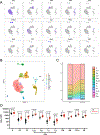


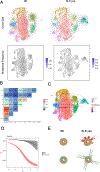
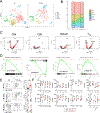
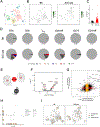
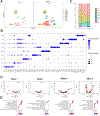

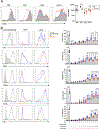
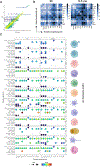
Similar articles
-
Autoreactive marginal zone B cells enter the follicles and interact with CD4+ T cells in lupus-prone mice.BMC Immunol. 2011 Jan 20;12:7. doi: 10.1186/1471-2172-12-7. BMC Immunol. 2011. PMID: 21251257 Free PMC article.
-
Neutrophils contribute to excess serum BAFF levels and promote CD4+ T cell and B cell responses in lupus-prone mice.PLoS One. 2014 Jul 10;9(7):e102284. doi: 10.1371/journal.pone.0102284. eCollection 2014. PLoS One. 2014. PMID: 25010693 Free PMC article.
-
Dual signaling by innate and adaptive immune receptors is required for TLR7-induced B-cell-mediated autoimmunity.Proc Natl Acad Sci U S A. 2012 Oct 2;109(40):16276-81. doi: 10.1073/pnas.1209372109. Epub 2012 Sep 17. Proc Natl Acad Sci U S A. 2012. PMID: 22988104 Free PMC article.
-
Immune Cell Metabolism in Systemic Lupus Erythematosus.Curr Rheumatol Rep. 2016 Nov;18(11):66. doi: 10.1007/s11926-016-0615-7. Curr Rheumatol Rep. 2016. PMID: 27709413 Review.
-
Mechanisms of autoimmunity in the context of T-cell tolerance: insights from natural and transgenic animal model systems.Immunol Rev. 1990 Dec;118:165-92. doi: 10.1111/j.1600-065x.1990.tb00816.x. Immunol Rev. 1990. PMID: 2150401 Review.
Cited by
-
Decoding B Cells in Autoimmune Diseases Through ScRNA + BCR-Seq: Current Knowledge and Future Directions.Cells. 2025 Apr 3;14(7):539. doi: 10.3390/cells14070539. Cells. 2025. PMID: 40214492 Free PMC article. Review.
-
Expansion of macrophage and liver sinusoidal endothelial cell subpopulations during non-alcoholic steatohepatitis progression.iScience. 2023 Apr 5;26(5):106572. doi: 10.1016/j.isci.2023.106572. eCollection 2023 May 19. iScience. 2023. PMID: 37124414 Free PMC article.
-
Single-cell RNA sequencing analysis reveals the heterogeneity of IL-10 producing regulatory B cells in lupus-prone mice.Front Immunol. 2023 Dec 14;14:1282770. doi: 10.3389/fimmu.2023.1282770. eCollection 2023. Front Immunol. 2023. PMID: 38155972 Free PMC article.
-
T cell help in the autoreactive germinal center.Scand J Immunol. 2022 Jun;95(6):e13192. doi: 10.1111/sji.13192. Epub 2022 May 31. Scand J Immunol. 2022. PMID: 35587582 Free PMC article. Review.
References
-
- Tsokos GC, Lo MS, Reis PC, and Sullivan KE. 2016. New insights into the immunopathogenesis of systemic lupus erythematosus. Nat. Rev. Rheumatol. 12: 716–730. - PubMed
Publication types
MeSH terms
Substances
Grants and funding
LinkOut - more resources
Full Text Sources
Medical
Molecular Biology Databases
Research Materials
Miscellaneous

